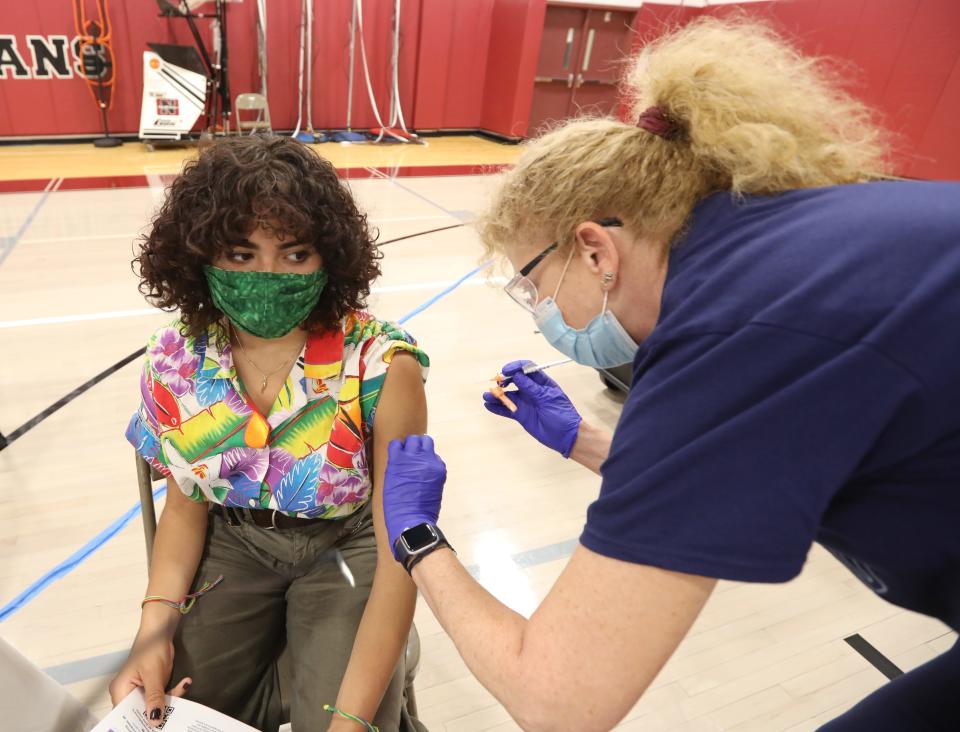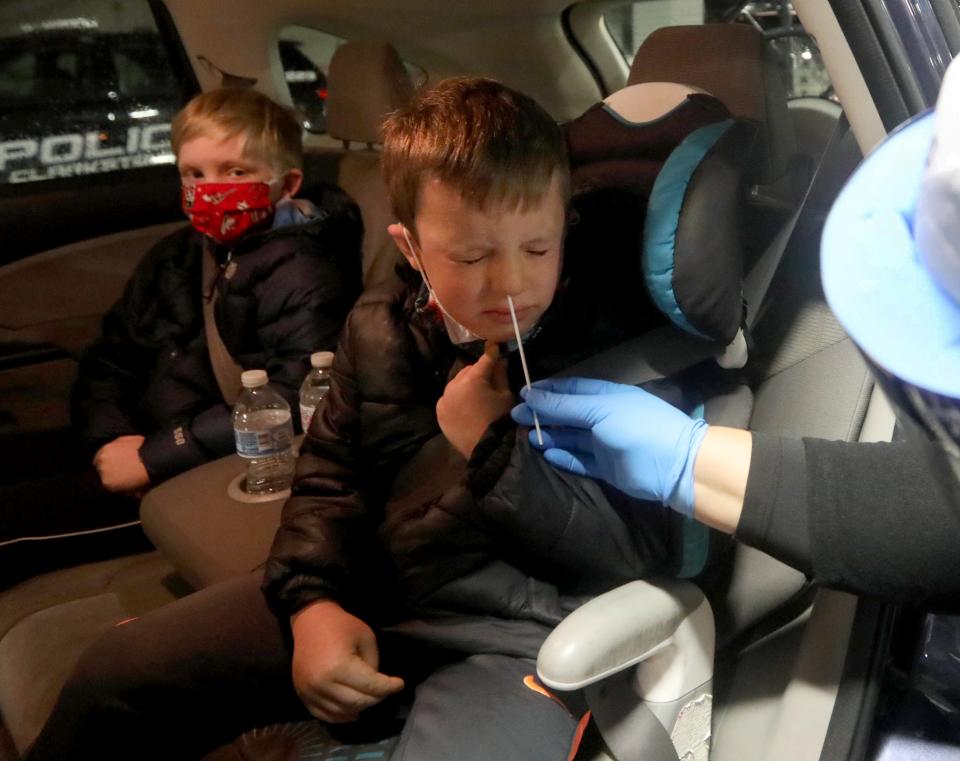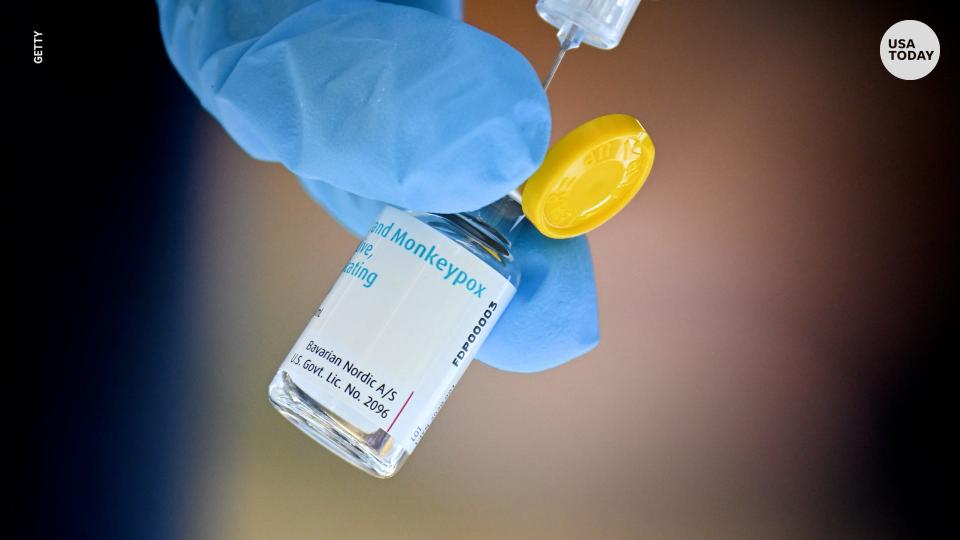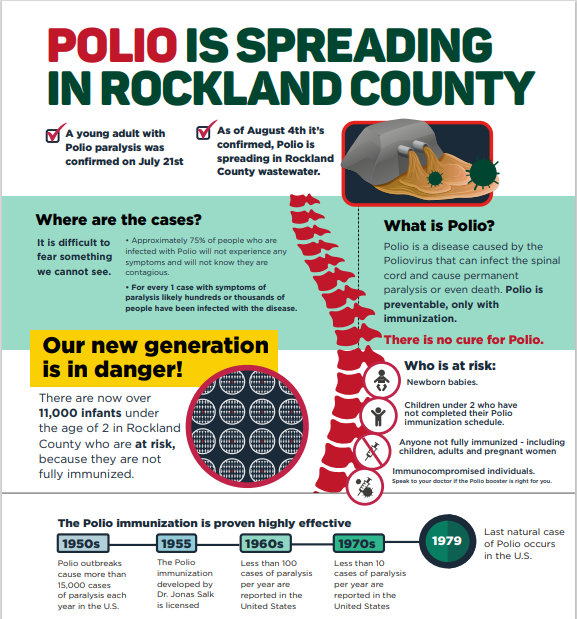See New York's new COVID rules for schools, plus health concerns about monkeypox, polio
- Oops!Something went wrong.Please try again later.
With schools starting in just a couple weeks, the state is rolling out overhauled COVID-19 policies that ease quarantine and testing mandates.
Meanwhile, with the first case of monkeypox in a child reported in New York last week, health officials have said schools should be prepared with information about the virus, but do not see schools as a major transmission risk.
Here's what you should know about the state's plan to update COVID rules for schools; the latest on monkeypox in New York; and more information about polio detection in New York.
COVID: Cases in NY plummet 14% as start of school approaches

What is NY's latest approach to COVID testing, quarantines?
COVID cases continue to fall across the state. But, as Gov. Kathy Hochul warned during a press conference Monday in New York City, fall brings colder weather, and school and holiday gatherings that bring people indoors together.
Still, Hochul remained optimistic as she announced a new set of COVID rules for schools.
"What a difference a year makes," Hochul said. She characterized the rules for schools last academic year as "confusing, very frustrating, stressful."
"This year we have a different scenario," the governor added.
Hochul released an FAQ Monday afternoon. Here's what we know about the plan, so far:
Students exposed to COVID won't have to quarantine. It is recommended students wear a mask for 10 days after exposure and test for COVID on Day 5 after close contact, or if they develop symptoms. "The days of sending an entire classroom home because one person was positive," Hochul said, "those days are over." The guidance follows an Aug. 11 announcement by the U.S. Centers for Disease Control and Prevention.
No more 'test to stay' or random testing. Students don't have to test if they were exposed, Hochul said. But test kits will still be given out and students will be advised to test. Students will be asked to wear a mask for 10 days after a COVID exposure. Masks will remain optional, though, in general.
Test negative, come back. If a child gets sick with COVID, they can return to school if they are symptom free and testing negative after five days. They should wear a mask for the next five days, Hochul said. If they can't wear a tight-fitting mask, they should isolate for 10 days. Students and others can also follow CDC guidance that allows a person to stop using a mask before Day 10 after two sequential negative tests 48 hours apart.
No more random testing. School districts had kept track of the virus on campus with "pool testing" that monitored a percentage of school campuses. That won't be a requirement anymore, Hochul said. But schools may opt to keep up that kind of screening for high-risk situations, like choirs or wrestling teams. "It's up to schools," Hochul said.
Mandatory reporting of COVID cases and testing to the state Department of Health ended June 30.

Test kits still available. Schools will continue to receive COVID testing supplies for families to access.
The goal, Hochul said, was to keep kids in school. She said educators and families are still dealing with the fallout of two years of interrupted learning and socializing.
"When traditional learning stops, it can be devastating," the Democratic governor said. Citing "deeply troubling" mental health issues among children, Hochul said that state's goal was "making sure (students) are where they need to be this fall."
Eric Byrne, president of the Lower Hudson Council of School Superintendents, said the relaxed guidelines would come as a great relief to schools and families.
“What this means for school communities is that we are returning, for the most part, to pre-COVID schooling,” said Byrne, the Rye City superintendent. “Obviously, there are lessons we learned and new processes in place, like for cleaning schools. But unless you’re COVID positive, based on what we’re seeing from the state, there are no COVID requirements as we enter this next phase.”
As difficult as the past two and a half years were for schools, he said, health policies and local efforts did keep students and staff safe.
“As challenging as it was, it feels like it worked,” he said.
Hochul said vaccination remains the best way to protect against COVID spread this fall.
Children as young as 6 months can get vaccinated against COVID, but rates for children, especially younger kids, lag. In New York, around 38% of children ages 5 to 11 and a little more than 73% of those ages 12 to 17 are fully vaccinated against the disease.
Polio in New York: What a new CDC report says about Rockland's case and potential spread
NY monkeypox outbreak: Disparities come into focus as vaccine push expands

Are kids at risk for monkeypox?
The state has reported one pediatric case of monkeypox among about 2,800 cases.
The pediatric case occurred outside New York City, but New York State Health Commissioner Dr. Mary Bassett declined to release any further information about the case, beyond saying "this is a minor."
Barrett said there are under a dozen monkeypox cases nationally in minors among about 15,000 cases.
Monkeypox spreads through close, physical contact between people. This means anyone can get monkeypox.
However, based on the current outbreak, certain populations are being affected by monkeypox more than others, including men who have sex with men.
"The school setting is not a setting about transmission," Bassett said.
However, she noted, half of teenagers have had sex before they are 18.
Education about safety measures remains important for youth, she said, adding that monkeypox risk factors tend to be related to household exposure and personal behavior.
"We are not worried about school," she said.
What are NY health experts saying about the polio outbreak?
Bassett also discussed the detection of polio in wastewater and a young Rockland County adult's paralysis from the virus.
The virus sickened and paralyzed young children and struck fear in parents' hearts during frequent summer outbreaks during the early and mid 1900s. It had been considered eradicated in the U.S. and the last paralytic here was in 1990.
Bassett called polio "a virus which we really never intended to have to deal with."
Wastewater samples showed polio in Rockland as early as March, Bassett said, a month earlier than state and federal officials had earlier reported. Samples in Rockland and Orange counties have been linked to each other. New York City wastewater samples have also showed the presence of polio.

"These data suggest that we have a community circulating polio virus," Bassett said.
The Rockland resident who suffered paralysis had never been vaccinated against the virus.
"Our message on polio is a simple one," Bassett said. "Get vaccinated."
While polio is among the mandatory vaccinations for public- and private-school attendance in New York, vaccination rates lag in certain areas, especially for children under 2.
The overwhelming number of polio cases show no symptoms. But in a small number of cases, the disease can lead to paralysis or even death.
Barrett added: "The last thing I want, to confirm the presence of polio, is another person with polio."
Staff writer and editor Gary Stern contributed to this report.
Nancy Cutler writes about People & Policy. Click here for her latest stories. Follow her on Twitter at @nancyrockland.
This article originally appeared on Rockland/Westchester Journal News: How will NY handle COVID, monkeypox risks with school about to start
